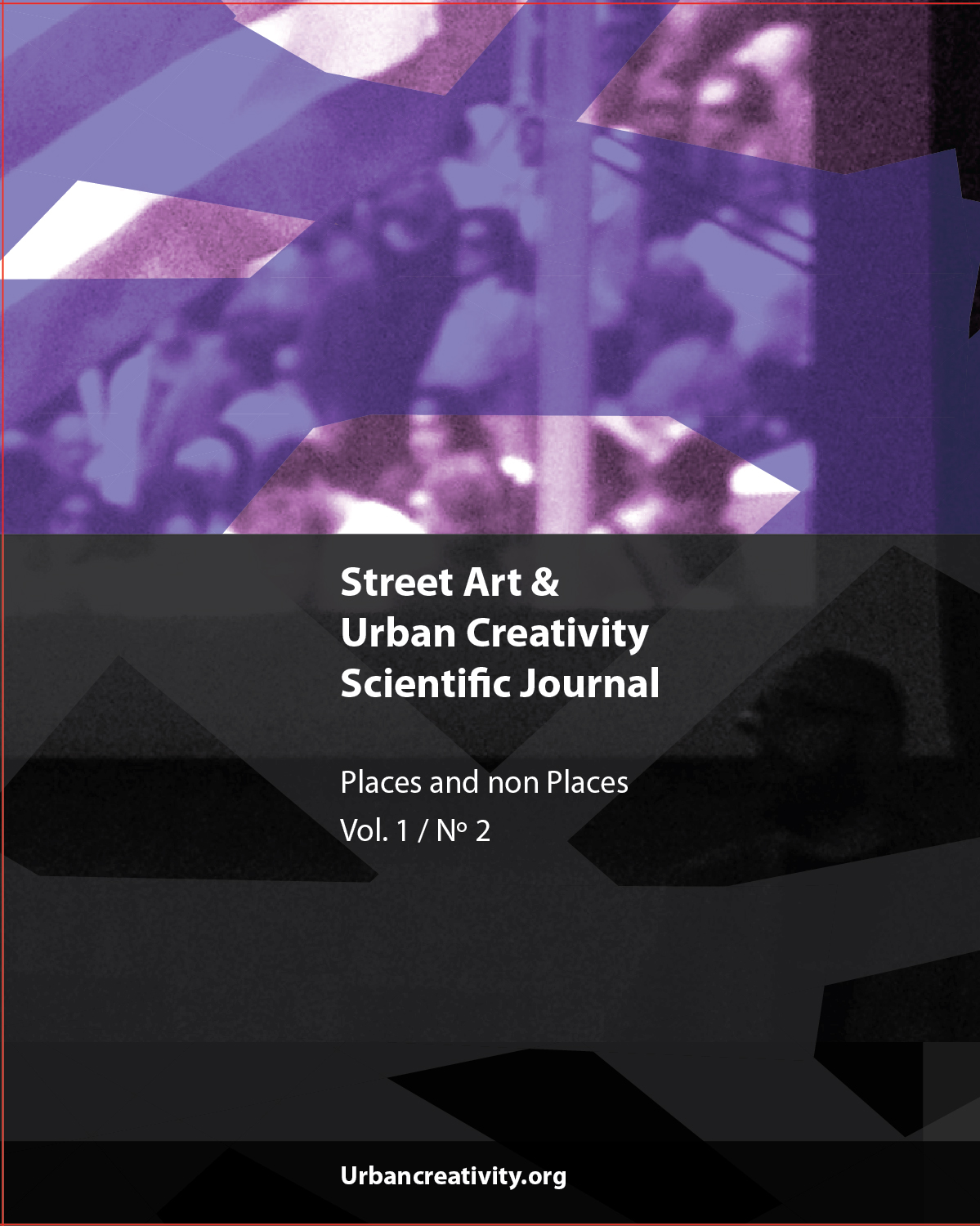Street Artist:
Urban Flanêurie
DOI:
https://doi.org/10.25765/sauc.v1i2.32Keywords:
Street Art, Flanêurie, Modernity, Anonymity, Transitional, EphemeralityAbstract
It is the goal of this paper to aesthetically rethink Street Art’s artistic process and question its narrative in urban and public space. We intend to highlight the anonymity, ephemeral, and transitory element as a key feature of its artistic creation. To this end, we will use as a starting point the relationship between the street artist and Baudelaire’s flanêur, to reach Foucault’s point of view, which somehow finds the key to the street artist’s aesthetic features, synthesized in the understanding of Baudelaire’s modernity, understood not as a mere historical period, but rather as an “attitude.”
Downloads
Global Statistics ℹ️
|
162
Views
|
50
Downloads
|
|
212
Total
|
|
Downloads
Published
How to Cite
Issue
Section
License
Copyright (c) 2015 Street Art & Urban Creativity

This work is licensed under a Creative Commons Attribution-NoDerivatives 4.0 International License.
Those authors who publish in this journal accept the following terms:
-
Authors retain copyright.
-
Authors transfer to the journal the right of first publication. The journal also owns the publishing rights.
-
All published contents are governed by an Attribution-NoDerivatives 4.0 International License.
Access the informative version and legal text of the license. By virtue of this, third parties are allowed to use what is published as long as they mention the authorship of the work and the first publication in this journal. If you transform the material, you may not distribute the modified work. -
Authors may make other independent and additional contractual arrangements for non-exclusive distribution of the version of the article published in this journal (e.g., inclusion in an institutional repository or publication in a book) as long as they clearly indicate that the work was first published in this journal.
- Authors are allowed and recommended to publish their work on the Internet (for example on institutional and personal websites), following the publication of, and referencing the journal, as this could lead to constructive exchanges and a more extensive and quick circulation of published works (see The Effect of Open Access).













